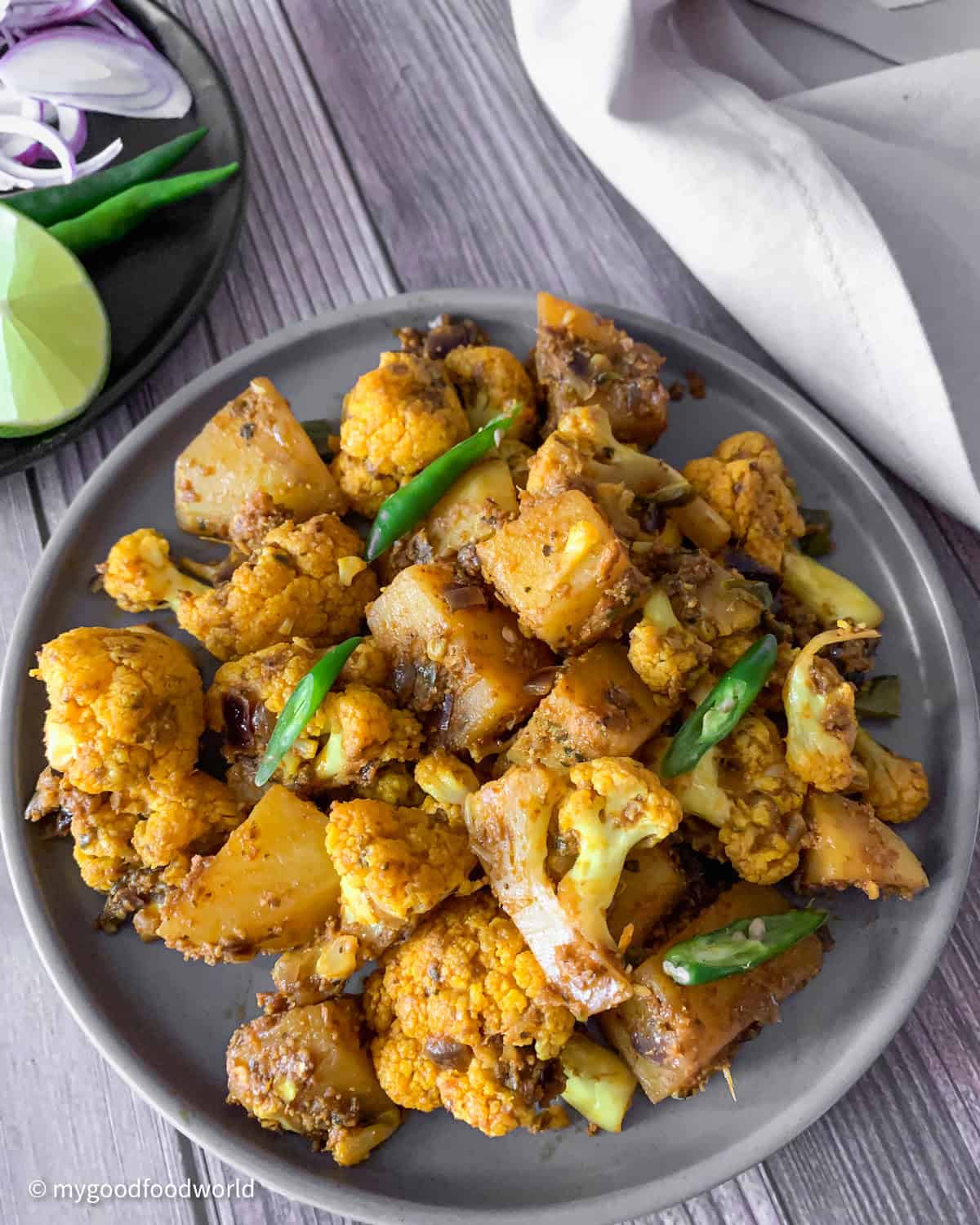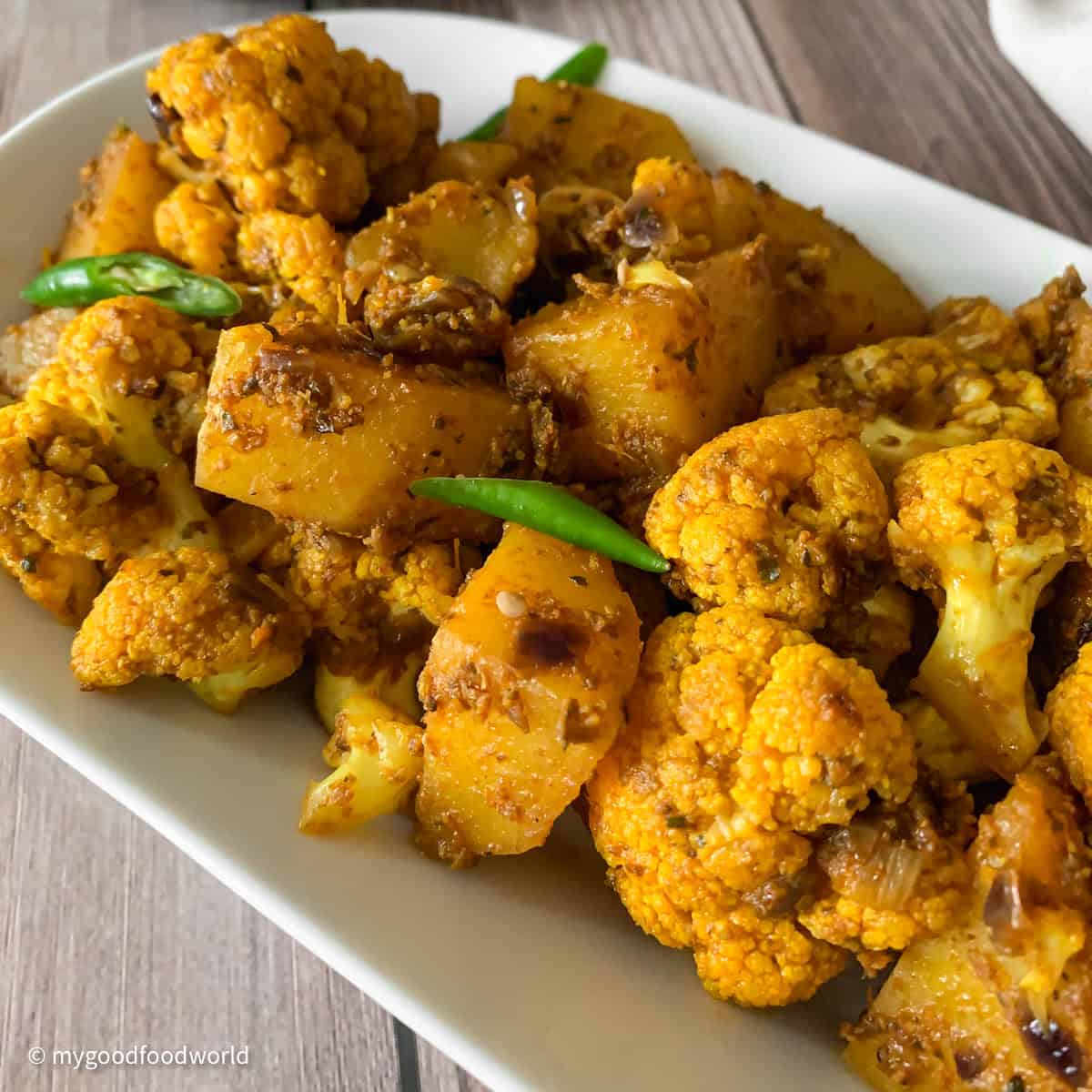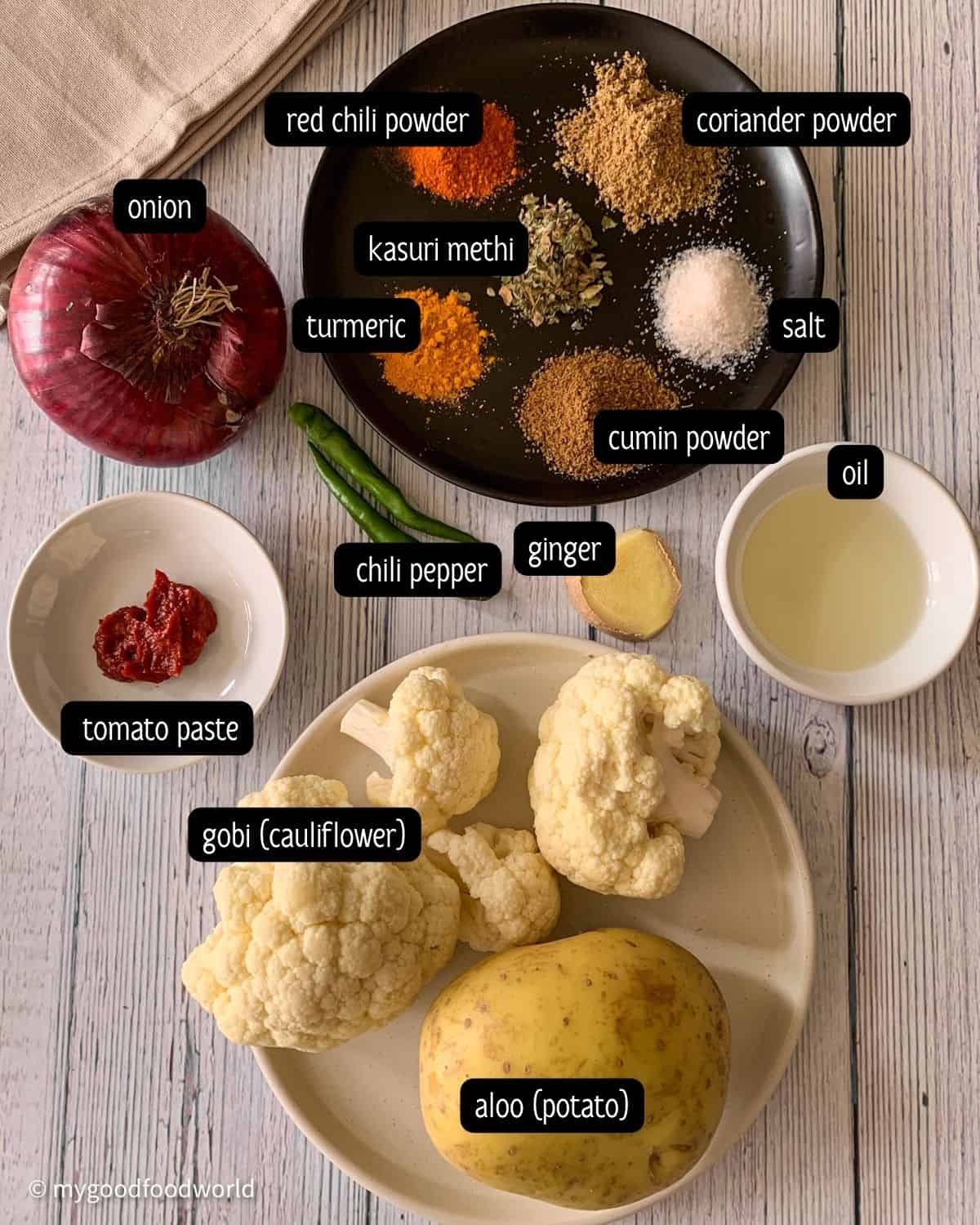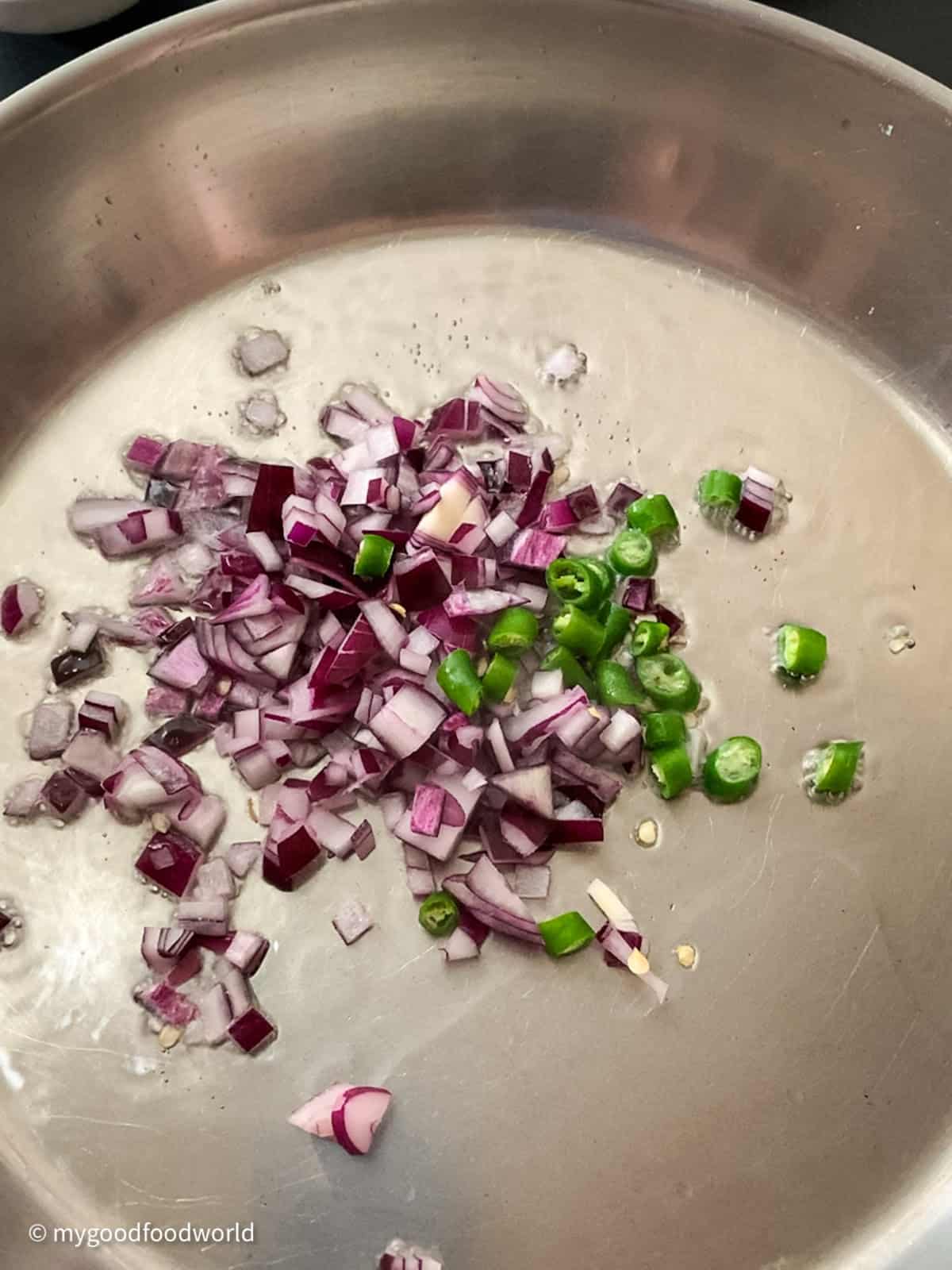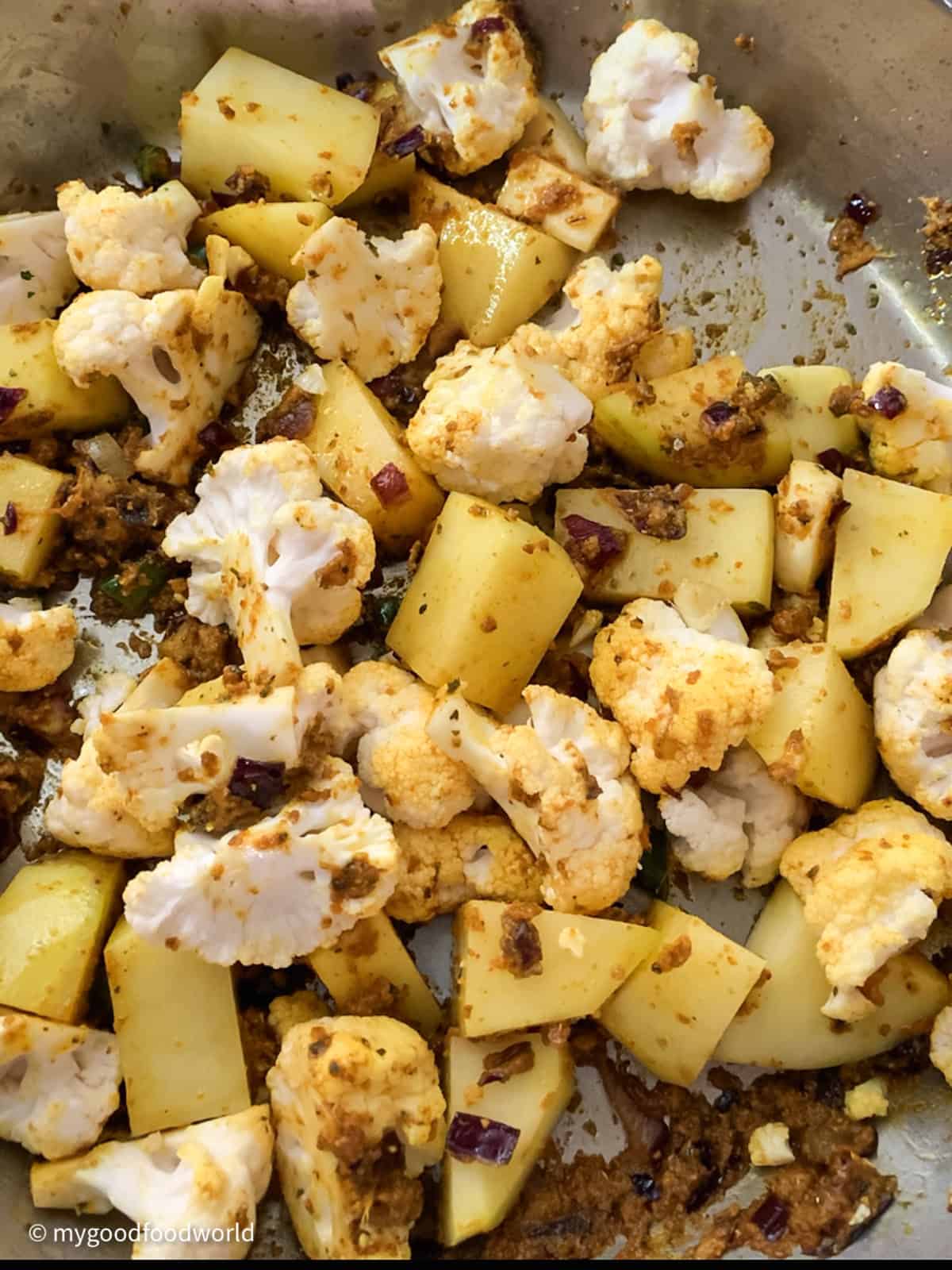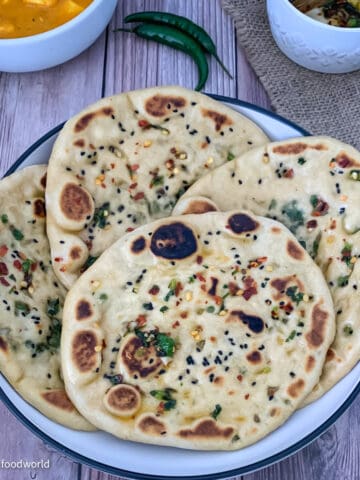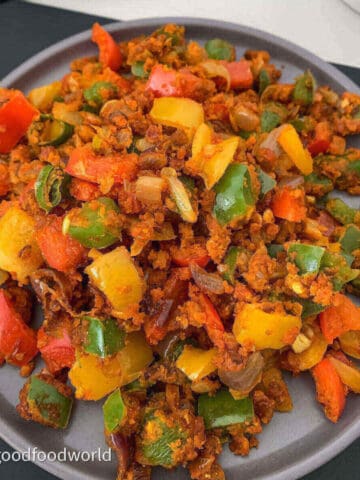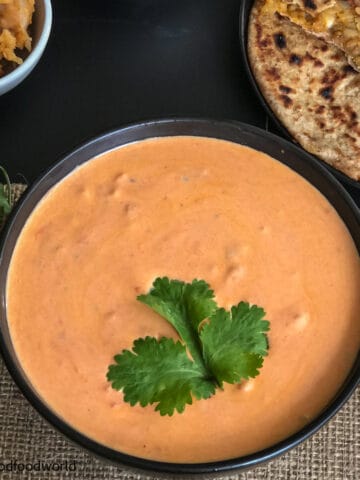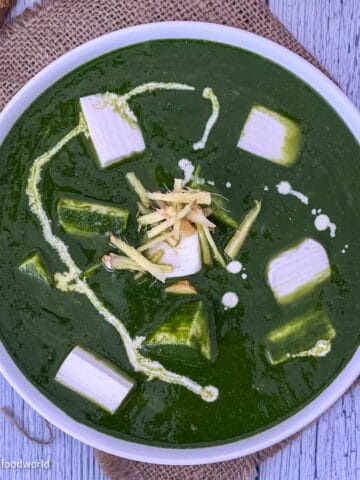This post contains helpful notes and tips to help you make the perfect dish. However, if you are in a rush, please use the “Jump to Recipe” link above or the “Jump to” links below to get to the section you want. Aloo gobi recipe can be made in different ways: as a dry curry, semi-dry, or with gravy. You can use only onions and ginger, as I have in this recipe, or add garlic as well. Feel free to experiment with different spices and make your own version of this classic vegetarian Indian dish - it is very forgiving! Any doubts or questions? Feel free to ask via the comments below. I will try my best to answer them for you. - Padma Different households make this dish in different ways, with many variations: some skip the onions and garlic; some blend them with ginger before cooking them in the spices; some use ghee instead of oil; some add green peas. The dish is made in two ways: a dry version - called aloo gobi sabji or aloo gobi dry - where the cauliflower and potatoes are seared and then steamed with very little water until they are done. This is the version I have made for you here. In the other version, called aloo gobi masala, the vegetables are cooked in a gravy of onions, ginger, garlic, tomatoes, and whole spices such as cumin seeds and cloves. This is the version you usually find in Indian restaurants. This recipe takes more time to make as the cauliflower and aloo are deep fried first and then simmered in the gravy. It is delicious, but I can have it only occasionally. One pan is all you need to make my aloo gobi, a delicious dish with a wonderful texture and rich fragrance. My girls say it’s the best aloo gobi they’ve ever tasted! It is a dish that is naturally vegan. It is also:
Gluten-free Nut-free Soy-free
You can make it easily in one pan, like this smoked eggplant curry, and store it for several days (check out the storage ideas section below). It is a dish that everyone will enjoy: cauliflower and potatoes are popular vegetables, and the spices add a lot of taste! This recipe is also forgiving and flexible - you can try different spices and aromatics to flavor the dish. More about that below. See the recipe card for quantities. Potatoes: Choose firm potatoes that hold their shape after cooking. Use the cauliflower florets along with their tender stems. Spice powders and herbs: These basic Indian spices enhance the flavor of the dish.
Cumin (jeera) powder: It complements the cauliflower perfectly. Turmeric powder gives the dish its signature deep yellow color. Coriander powder, also known as ground coriander, adds a touch of earthiness to the sabzi. Kasuri methi or dried fenugreek leaves. They impart a distinctive, slightly bitter, herby flavor to the dish. Red chilli powder: I opt for the milder variety such as Kashmiri chili powder or paprika, mainly for its color.
Onion: I like red onion for its rich, sweet taste, but you can also use yellow onion. Ginger: Use fresh ginger. It provides a gentle heat and helps to reduce the gas that cauliflower and potatoes can cause. Tomato paste (concentrate): I use tomato paste instead of fresh tomatoes because it is deeper in flavor and suitable for a dry curry. Chili peppers: I go for green chilies. You can adjust the spiciness according to your preference. Oil: Any neutral oil will do. In addition to the above, to finish off the dish (this is totally optional) add any or all of these:
some fresh cilantro (coriander leaves) a squeeze of lemon juice some slivers of fresh ginger
If you have any questions regarding these ingredients, feel free to ask in the comments section below and I will try my best to answer them for you. Also, see the video at the end of the recipe card. Step 1: Start with some prep work.
Peel and dice the potatoes into bite sized pieces. Keep them immersed in water until required. Wash and cut the cauliflower into bite sized florets. Keep aside. Finely chop the onion and the chili peppers. Crush or mince the ginger. Measure the rest of the ingredients.
Step 2: Make the blend of spices (masala paste). Add cumin powder, turmeric, coriander powder, salt, kasuri methi, and chili powder to a bowl and make a runny paste with ¼ cup of water. Keep aside. Tip: Crush the kasuri methi between your palms to release their flavor. Step 3: Make cauliflower aloo sabzi. To make this dish the way they serve it in Indian restaurants, you would start by frying the gobi and aloo in oil, which of course, makes the dish very oily. I like to make it less oily and so I skip that step.
In a skillet or Dutch oven, over medium high heat, heat oil and fry the chopped onion and chili peppers until soft and colored.
Fry the masala paste and ginger, on medium heat, for 2-3 minutes, or until the oil separates from the sides.
Add the potato cubes and cauliflower florets. Mix well to coat them with the spices and fry for a couple of minutes.
Add the tomato paste and water. Mix well. Cover and cook on medium-low heat for 25 to 30 minutes, or until the veggies are tender. Cooking time will vary depending on the type of potatoes you use.
Cut a piece of potato to check. Your curry is cooked if it cuts through easily. If not cooked, add a bit of water, cover and cook for a few more minutes. Finish off by adding the cilantro, a squeeze of lime juice, and ginger slivers (if using), after taking the pan off the heat. That’s it! You have a simple and easy Indian cauliflower and potato dish. Check out the section below for how to pair it with other dishes to make a sumptuous meal. Cauliflower: You want the cauliflower (and potatoes) to stay intact after cooking, so don’t chop them too small. Top tip: Older cauliflower (2-3 days) keeps its shape better than fresh ones. No tomato paste?: No worries, use 1 small fresh tomato instead. You can also get the tanginess from amchur powder - dry mango powder - 1 teaspoon of it will do. To make it allium-free, skip the onion and use only ginger for flavour. The spices: If you are a fan of Indian cooking, you should keep the basic spices: cumin, coriander, and red chili powder, in your store cupboard. Otherwise, you can substitute them with 1 teaspoon garam masala or your favorite curry powder. Ginger: My preferred method is to crush it with a mortar and pestle. You can mince it or use store-bought ginger paste if you don’t like the bits. Alternatively, you can add ginger garlic paste, if you’re a fan of garlic. Kasuri methi: This is an essential ingredient that gives a unique, strong, and aromatic taste to the dish. Unlike in my shahi paneer recipe, and dal tadka, where I add this herb at the final stage, I use it earlier in this recipe to infuse more flavor. Water: You need a total of ½ cup of water: ¼ cup for the masala paste and another ¼ cup for cooking. Have 2-3 tablespoons of extra water ready, if needed. Tip: Use hot water to avoid lowering the cooking temperature. Texture: You want the potatoes and cauliflower to be soft but not mushy when cooked. I prefer my cauliflower to have a bit of crunch. If you like them soft then add a splash of water and cook them for a couple of minutes more. Pro Tip: Do not be in a rush to cook this dish. For best outcomes, cook it on low flame. Consistency: This gobi aloo is a dry dish, meaning there is no gravy. The spices coat the vegetables. This makes it a great accompaniment to your main dish or a filling for wraps. If you have made this aloo gobi recipe, please take a moment to leave a comment and a rating below. This will make me super happy and motivate me to create more good content for you! You can also engage with me on Twitter, Facebook, and Instagram xx Padma Make sure to cool the curry completely before storing it in an airtight container that is safe for the fridge.
📖 Recipe
Disclosure: The nutritional information is calculated using an online calculator and is based on available ingredients and preparation. It should not be considered a substitute for a professional nutritionists’ advice. Changing the quantities and cooking technique will alter the nutritional calculations.
